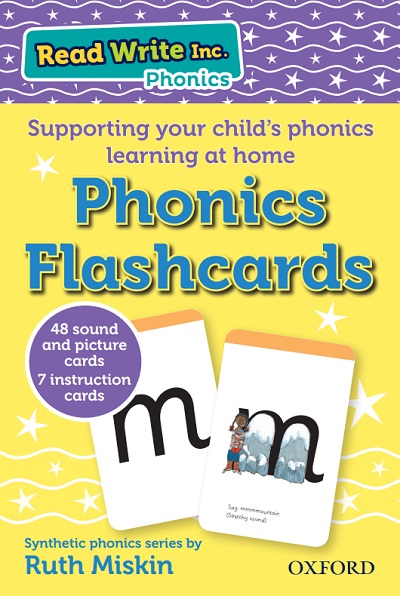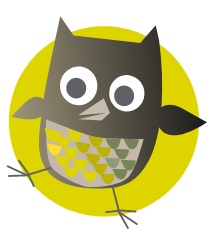If you have a child in Reception, they’ll probably have started to bring books home to practise reading with you.
Take a look at our advice on the sort of books to expect in your child’s book bag and top tips on how best to support your child as they learn to read.
How is my child learning to read?
At school
At school, your child will be learning to read through phonics. Phonics is a method of teaching reading and writing to children in which they learn the letter or group of letters that correspond to a sound.
A sound can be represented by a single letter – for example, each of the three sounds in ‘hat’, h-a-t). Sometimes a sound is represented by more than one letter such as sh in sh-o-p, ay in p-l-ay, and igh in l-igh-t.
At first, your child will learn a set of sounds and the letters that represent them. (Learning the letter names, like ‘double-u’ for ‘w’, will come later.) Then they will be taught to blend those sounds together to read words.
The order in which the sounds are taught will depend on which reading programme is used at your child’s school. Your child’s teacher can tell you all about their chosen programme and the order in which sounds are taught.
At home
Encourage your child to say the letter sounds in a short and clear way, without an ‘uh’ at the end of consonant sounds (for example, ‘p’, rather than ‘puh’).
This takes some practice but it will help them when start blending the sounds together to make words. For example, it’s easier to blend the sounds c-a-t together to make ‘cat’, than the sounds cuh-a-tuh.
Once your child can blend sounds together, they’ll be able to read books written with words made up of the sounds they’ve learnt.
What books will my child bring home?
The books your child is given to read should contain words made up of the sounds that they know. This means the books are ‘decodable’ by your child because they have learnt the ‘code’ – the letters and sounds that make up the words in their reading book.
A good comparison I heard recently was that a music teacher would never expect a child to be able to read musical notes they haven’t been taught. If your child practises their reading with books at the right level, this will ensure they make progress. They’ll experience success and an enjoyment of reading and grow in confidence.
If your child comes home with the same book more than once, there is a good reason for this! Children benefit from reading a familiar book to build fluency and understanding. Your child’s first reading might be quite stilted as they focus on sounding out and blending the words, but after lots of practice they will become more fluent. When they can read a book more fluently, it is easier for them to focus on the meaning of the text and they might notice things they had missed on an earlier reading.
How can I support my child’s reading?
When helping your child with their reading, make sure you choose a time when they’re not too tired. Remember that learning to read will take time – be sure to stay patient as your child acquires this new skill!
- Don’t read the book to your child before they read it to you – they may just remember the words and not get any real practice.
- If your child can read the story well, that doesn’t mean the book is too easy. It’s important they get plenty of practice reading words containing the letters and sounds they have learnt. Celebrate their achievement with them – reading success is important in building their confidence and enjoyment!
- If your child struggles with a word, ask them to ‘sound out’ the word by saying the individual sounds in the word and then blending the sounds together (for example, ‘c-a-t – cat’).
- Don’t let your child struggle too much – if they are really stuck with a word, sound it out for them quickly so that they can hear the word. Plenty of praise when they succeed will help them to keep going.
- Don’t ask your child to use the pictures to guess the words. Pictures can provide great opportunities to talk about what is happening in a story, but it’s important that your child doesn’t become dependent on them to read.
- Read back each sentence or page to your child to ensure they have understood.
- When your child has read the book, talk about it together.
As well as your child reading to you, it’s important that you read stories, rhymes, and non-fiction books to your child. This will increase their vocabulary, develop their comprehension, and encourage the habit of reading – which is a great habit to have!
How to pronounce pure sounds
Learn how to pronounce all 44 phonics sounds, or phonemes, used in the English language with these helpful examples from Suzy Ditchburn and her daughter.
How to blend sounds to read words
Suzy Ditchburn explains how letter sounds can be blended to read words, and gives tips on how to practise phonics with your child.
Phonics kits and flashcards
Most primary schools in the UK use either Oxford Reading Tree or Read Write Inc. Phonics as their main phonics programme. The kits and flashcards below are most effective when they are supporting the programme used at school, so be sure to check which programme your child’s school uses.
Please note: all book links lead to more information on Amazon.co.uk
Oxford Reading Tree: My Phonics Kit
Perfect preparation for the Year 1 phonics check.
- Read phonics stories: Enjoy three levelled workbooks and three levelled storybooks.
- Build confidence: Reward stickers motivate your child.
- Information for parents: Literacy expert Laura Sharp explains how to help.
Oxford Reading Tree: My Phonics Flashcards
Practise phonics with Biff, Chip, Kipper and Floppy the dog!
These flashcards have been specially developed to help your child succeed at reading. Created by reading experts and based on current teaching practice, they complement how your child is starting to read at school and keep children engaged in reading at home.
Read Write Inc. Phonics: My Reading and Writing Kit
This kit has been specially developed to introduce your child to phonics and support their first steps in learning to read and write. Based on Ruth Miskin’s trusted and successful Read Write Inc. Phonics synthetic phonics programme, it provides the perfect starting point for learning to read.
The kit includes phonics flashcards, a handwriting book, a wipe-clean sheet and pen, a bedroom frieze with picture prompts to remember sounds, and a parent handbook with practical advice for giving your child a head start.
Read Write Inc. Phonics: Phonics Flashcards
These flashcards are a great way to introduce the letters and sounds that make up words – the ‘Speed Sounds’. The cards feature all 31 Set 1 Speed Sounds and corresponding letters to enable children to learn phonics and decode words easily.
Full colour illustrations and picture cards place the sounds in context, providing an enjoyable way to practise using the sounds they have learnt. Parent notes offer guidance on how to use the cards and tips to support first steps in learning to read.
More from Oxford Owl
- Learn about phonics and find lots of free resources at Parent guide to phonics
- Browse our books for readers in Reception at Read with Oxford Stage 2
- Find out about Letters and Sounds at What is Letters and Sounds?





